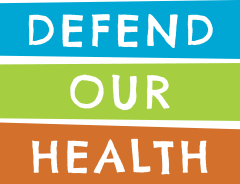Maine Citizen-Led Effort Results in First-Ever Reporting of Toxic Phthalates
May 5, 2016 |
“This data provides new examples of products that are letting these hormone-assaulting chemicals infiltrate our bathrooms, kitchens, schools, and ultimately, our bodies,” said Mike Belliveau, executive director of the Maine-based
The new data is the result of a 2014 citizen-led petition effort in
Fourteen manufacturers reported their use of four phthalates in 130 products. Phthalates are mainly used as plasticizers, making vinyl plastic flexible. However the most common use reported to the Maine DEP came from manufacturers using phthalates as a fragrance ingredient.
“As a mother, I find myself getting angry and scared about harmful chemicals in consumer products lurking behind the word ‘fragrance’,” said Paige Holmes, a mother of two young boys in
In addition to the first-time disclosures about toxic phthalates in specific paints and cleaners, manufacturers reported the use of phthalates in vinyl plastic used in clothing and shoes, as well as in fragrances in personal care products. Reporting companies included 3M, which revealed phthalates in the fragrances of cleaners, disinfectants, and deodorizers, and Gap, Inc. which reported phthalates used to soften the plastic tips of shoelaces and drawstrings.
“Danger lurks behind the word ‘fragrance’,” said Emma Halas-O’Connor at Prevent Harm. “As an advocate for eliminating the uses of harmful chemicals in consumer products who is also a new homeowner, I am caught in a bind knowing that phthalates might be in many of the paints, cleaners, and other home maintenance products I’ve been using to fix up my house.”
Advocates thanked the Maine DEP for gathering the manufacturer reports in compliance with the law, and highlighted the importance of state disclosure policies like the one in
The authors of the report note that the information collected represents just the “tip of the iceberg,” and that the use of phthalates in consumer products may be significantly under-reported. The State of
“We’re grateful to the Maine DEP for finally providing us with additional information about phthalates in consumer products that would otherwise not be available,” said Tracy Gregoire of the Learning Disabilities Association of Maine. “However, we can and should do more to provide information that could prevent pregnant women and children from being exposed to chemicals linked to learning disabilities, reproductive harm, and asthma. And we need to fix the loophole that prevents the state from collecting information on phthalates and harmful chemicals in food packaging, which is a significant source of exposure. No parent wants to expose their child to chemicals that could cause any of these serious illnesses.”
“Business owners do not want to put their customers, workers, or families at risk of exposure to dangerous chemicals like phthalates,” said Bettyann Sheats, owner of Finishing Touches Shower Doors in
Phthalates are tied to reproductive harm, learning disabilities, and asthma and allergies—even at low levels of exposure. Strong science linking phthalates to health hazards has led to restrictions throughout Europe, and several phthalates are prohibited in children’s products in the
“Well-documented science leaves no doubt that phthalates are linked to a number of health concerns,” stated Jeffrey Saffer, MD of Physicians for Social Responsibility Maine Chapter. “We also know that phthalates readily escape from products and enter the human body through breathing, eating, and skin contact. Toddlers are more highly exposed than adults because of their frequent hand to mouth activity. This report shows why it is both reasonable and appropriate that we collect information about which products are the source of the exposure.”
Phthalates were reported as an ingredient in fragrance for more than half of the products. “Fragrance” can include dozens of chemicals, and there is no requirement that companies must disclose these ingredients publicly. In more than a third of the products, manufacturers reported using phthalates as a plastic softener in clothing, toys, and home maintenance products.
What Stinks? Toxic Phthalates in Your Home was authored by the
“This new report can help retailers identify the types of products where phthalates are still hiding on store shelves,” said Mike Schade, Mind the Store campaign director for Safer Chemicals, Healthy Families. “Big retailers should use their purchasing power and influence to drive these unnecessary toxic chemicals out of fragrance and plastics.”
A growing number of states, including
“In the absence of any federal laws requiring ingredient disclosure for cleaning products and fragrance ingredients, this new data provides crucial information women can use to reduce their exposure to chemicals like phthalates that can cause reproductive harm,” said Erin Switalski, executive director of Women’s Voices for the Earth. “We urge the cleaning product companies that have reported using phthalates to commit to the elimination of this toxic chemical.”
“This report shows that our families are being exposed to dangerous ingredients that are hiding in the products we use every day,” said Janet Nudelman, Breast Cancer Fund Director of Program and Policy. “Consumers have an urgent right to full disclosure of all, and not just some, of the chemicals such as phthalates in their personal care and cleaning products so they can make safer, more informed purchases.”
###
The full report can be found at: www.bit.ly/WhatStinks
Early in 2014, 25 Mainers had their bodies tested for the presence of seven different phthalates. The results, published in “Hormones Disrupted: Toxic Phthalates in Maine People”, were shocking to many of the participants and ignited the citizen-initiated petition effort to find out more about which everyday products contain the dangerous chemicals.
In May 2014, parents, doctors, and public health activists gathered and submitted the signatures of 2,071
The Alliance for a Clean and Healthy Maine is a coalition of over 50 public health, medical, parent, community, women’s, worker, environmental, and public interest organizations dedicated to protecting public health and the environment by replacing unnecessary dangerous chemicals with safer alternatives. www.cleanandhealthyme.org
